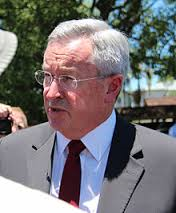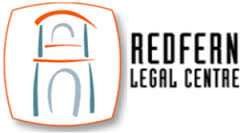March 19, 2015 - 10:15AM Elizabeth Farrelly
 |
| Illustration: Rocco Fazzari |
Selling assets for income is like losing your virginity; you can only do it once, so you really,
really want to pick your moment. All parents, I imagine, tell all children this. So why hasn't anyone told the government?
It's four years since Barry O'Farrell pranced into power plumed with sunlit promises of planning reform. For the first time in NSW's 223 years, city-making had become an election issue - as though we'd finally
got that abuses of power crystallise into permanent snafus in the city fabric.
Cultural institutions are a city's eye teeth, giving shape and personality.
O'Farrell tapped this new NSW awareness. He promised to make developer donations illegal, rewrite the planning act, close legal loopholes like the infamous Part 3A and end the conflicts of interest built into government planning processes.
None of it eventuated. Developer donations were simply channelled underground through special party-constructed sewers. Part 3A was replaced by countless other apertures for ministerial "discretion". The new planning act was asphyxiated by the community distrust that this catalogue of cave-ins only accentuated. And the conflicts of interest became, if anything, more entrenched.
Advertisement
And the snafus? I give you James Packer's towering casino on public land, fast-tracked to heaven. Darling Harbour, also on prime public land but shaped to rock-bottom commercial motives. The Boxing Day truncation of Newcastle's main rail line for development purposes, and its never-never replacement by a tram that (according to a leaked Cabinet minute, December 9, 2013) undermines the public interest in both cost and amenity.
There's more. Mining and CSG licences across much of the state's food-production land. The fire-sale of Millers Point public housing and of our glorious Bridge Street sandstones. The flogging of poles and wires. And the sale of the Powerhouse Museum site for yet more rubbish apartments.
Only the Jenolan Caves sale may not materialise although, well, wait and see.
This mentality, so characteristic of government now, is not just morally but economically vapid. You keep it, there's an income stream, a culture source, a way of growing food. Sell and it's gone. As Marie Bashir said recently, we must fight "the sale and destruction of our farmland for mining."
Yet whenever I point to this deliberate destruction of our assets and institutions I'm accused of playing politics. "Another stupid leftie," was a typical tweet by one David Armstrong (@truth9876) after I critiqued Abbott's attack on the Human Rights Commission. "Pointless arguing with stupid lefties, curse of Australia."
Armstrong's coinage was manifestly tautological. For him, as for most of the winged-monkey troll-squadron, "stupid" and "leftie" are synonyms. Yet I query them. "Stupid", perhaps, depending on circumstance. But leftie? What part of protecting your assets equals "leftie"?
Interestingly, one of the few who understands that conservation is, well, conservative is Fred Nile. On coal seam gas, and on the rail-line truncation, Nile and I are as one. He wants a five-year CSG moratorium, to cover
existing operations as well as new licenses until it is proven safe for both water and food production.
On the Newcastle rail line fiasco, the select committee, chaired by Nile, on
The Planning Process in Newcastle and the Broader Hunter Region, recommended earlier this month "that the NSW government immediately reinstate rail services that have ceased and infrastructure that has been removed from the Newcastle heavy rail line."
The Nile report also underlined the many and deep-seated conflicts of interest inherent in NSW urban planning regimes, in the context of which gaping ministerial discretion and rampant asset sales are especially sinister. The forest of secret conflicts means you never quite know where the government is coming from. It's that trust thing.
"There is," Nile wrote in his foreword, "an irreconcilable conflict of interest in the relationship between UrbanGrowth NSW and the Department of Planning and Environment whereby the NSW government is both the landowner, via UrbanGrowth, and the planning consent authority, via the department. This conflict is unacceptable…"
This same conflict deforms and contorts the proposal to "relocate" the Powerhouse Museum to Parramatta, allowing redevelopment of its Ultimo site, which UrbanGrowth is even now eyeing up for sale.
Certainly, Parramatta should have a major art institution. No question. But the Powerhouse has a massive, never-seen collection, easily enough for three or four museums. But it is impossible to feel that the decision is being made with the city's best interest in mind.
The Ultimo site is expected to fetch $150-$250 million, depending on planning constraints. These constraints should properly be set by the city council, but they won't be, because the state is exempt. Effectively, it sets its own limits.
This means that here, as on the UrbanGrowth-GPT site in Newcastle, as on Barangaroo, there is direct incentive for the government to maximise heights and minimise heritage protections. A direct incentive to betray the public interest.
It's no accident that this proposal coincides with the emergence of the city's southern end as its new energy centre. For six decades, as skyscrapers dragged the energy north, the area around Central stagnated. But fallow years are seldom wasted. Here, they nurtured a genuine arts and sciences precinct, with UTS, TAFE, the ABC and the Powerhouse all in a heap.
Now - reinforced by Central Park's miraculous new porosity, UTS' massive campus investment (including the Gehry) and the Goods Line walkway - that hub has started to pull back. City-south is booming.
The government has already reaped massively from this shift. The $2 billion Darling Harbour redevelopment is funded by four student-housing towers at its southern end and a twin-tower hotel to the west – all on public land.
But cities are cumulative. That's why great cities are old cities. Sure, the Powerhouse needs a revamp. But it has a new management team (under a year old) and a huge opportunity to about-face, physically, opening to Darling Harbour. It's a time for burnishing and refinement, not a knock-down.
Cultural institutions are a city's eye teeth, giving shape and personality. Sydney doesn't have so many creative precincts that it can afford to play fast and loose. The cherry, once lost, is lost forever.
Resourced:
http://www.smh.com.au/comment/powerhouse-museum-needs-a-revamp-not-a-knockdown-20150318-1m1tvi.html









